Disparate Treatment Cases Involve
Disparate treatment cases involve. If the employer proves that it had another reason for its actions and it would have made the same decision without the discriminatory factor it may avoid liability for monetary damages reinstatement or promotion. Disparate treatment is one kind of unlawful discrimination in US labor law. 15 1977 the plaintiff is required to prove that the defendant had a discriminatory intent or motive.
In such disparate treatment cases which involve the most easily understood type of discrimination Teamsters v. Duke Power Co 401 U. Disparate treatment cases involve.
Disparate treatment claim of intentional discrimination which a prima facie case establishes only by inference the disparate impact caused by an employment practice is directly established by the numerical disparity shown by the prima facie case and the employer can avoid liability only if it can prove that the discriminatory effect is justified. United States 431 US. The basis for the less favorable treatment may be due to the individuals race religion sex color or national origin.
Disparate treatment cases involve issues of proof. What is the employers reason for the difference in treatment. Disparate treatment is less favorable treatment of employees in a protected class.
This occurs for example when an organization singles out individuals from a specific group and treats them differently somehow. Employers are now smart enough to avoid explicitly basing their decisions on sex. 424 1971 this theory of discrimination provides that a facially neutral employment practice may be deemed illegally discriminatory without evidence of the employers subjective intent to discriminate that is required in a disparate-treatment case Raytheon supra at 5253 internal quotation marks and alteration omitted.
Employees make disparate treatment claims when they believe that an employer has discriminated or retaliated against them. Were people of a different race color religion sex or national origin treated differently. While disparate impact may not be intentional disparate treatment is the more obvious version.
City of Newport Beach the plaintiffs are trying to bring a disparate treatment intentional discrimination claim without having to show that any individual or entity was treated differently under. Is there any evidence of bias such as discriminatory statements.
City of Newport Beach the plaintiffs are trying to bring a disparate treatment intentional discrimination claim without having to show that any individual or entity was treated differently under.
Only available for disparate treatment cases involving gender religion and national origin but NOT FOR race or color To successfully use this defense the employer must show that the basis for preferring one group over another goes to the essence of what the employer is in business to do and that predominant attributes of the group discriminated against are at odds with that business. These types of lawsuits normally involve arguments about the treatment of similarly situated employees differed from the plaintiffs. Were people of a different race color religion sex or national origin treated differently. The plaintiff in a disparate treatment case need only prove that membership in a protected class was a motivating factor in the employment decision not that it was the sole factor. But there is another case that PLF filed a brief in this week concerning the intersection of disparate impact and disparate treatment under the Fair Housing Act. Disparate treatment occurs when a worker is treated differently than employees who do not have the same protected characteristics. This occurs for example when an organization singles out individuals from a specific group and treats them differently somehow. This contrasts with disparate impact where an employer applies a neutral rule that treats everyone equally in form but has a disadvantageous effect on some people of a protected. Purposefully treating individuals from one group in a way that results in a negative impact.
In such disparate treatment cases which involve the most easily understood type of discrimination Teamsters v. Disparate treatment cases typically involve the following issues. Therefore when a man is given a promotion over a woman it may be difficult to determine whether this was the result of sex discrimination or whether he was the. In such disparate treatment cases which involve the most easily understood type of discrimination Teamsters v. Disparate treatment also known as adverse treatment occurs when an employer treats an employee unfairly compared to other employees based on their personal characteristics especially in regard to protected classes. This occurs for example when an organization singles out individuals from a specific group and treats them differently somehow. Disparate treatment cases involve.

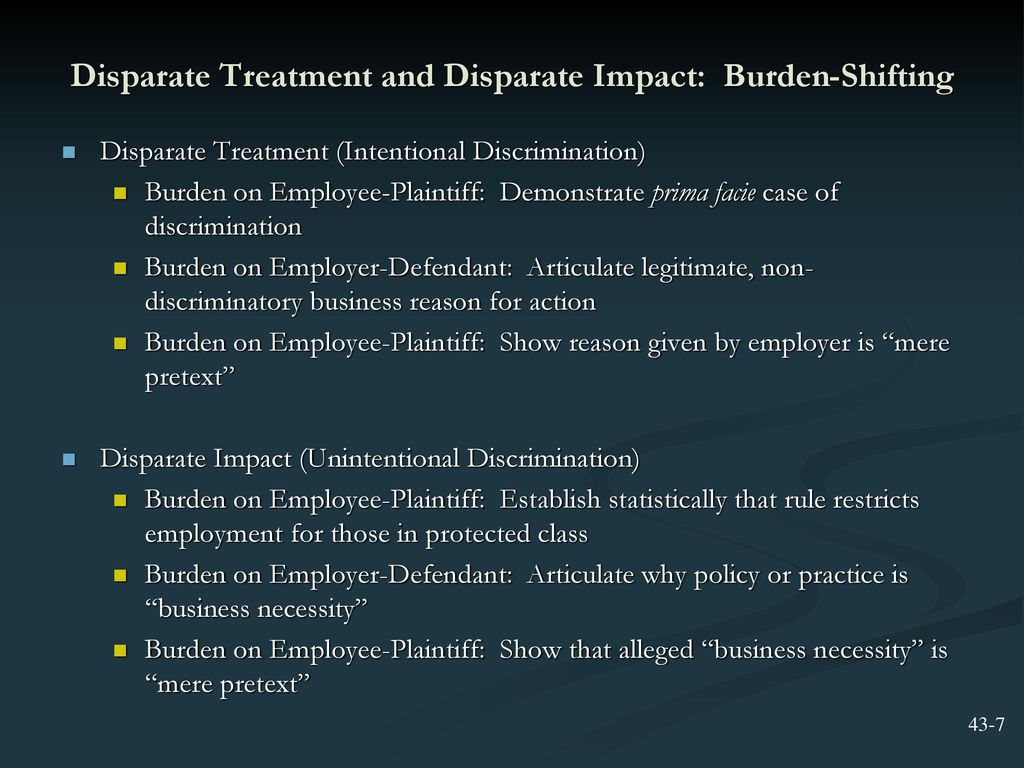


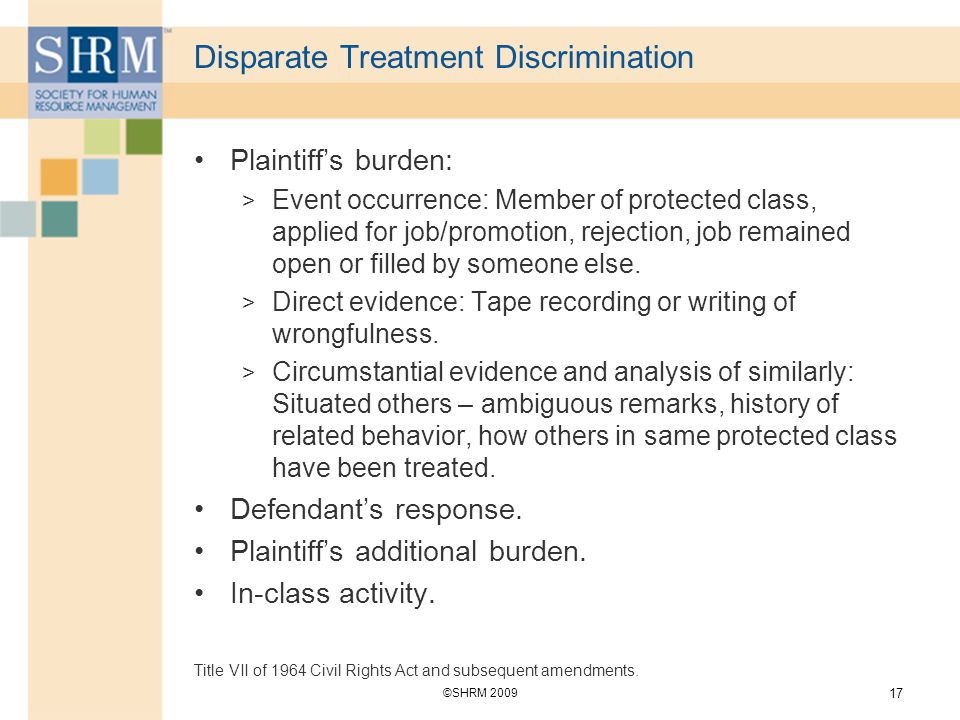


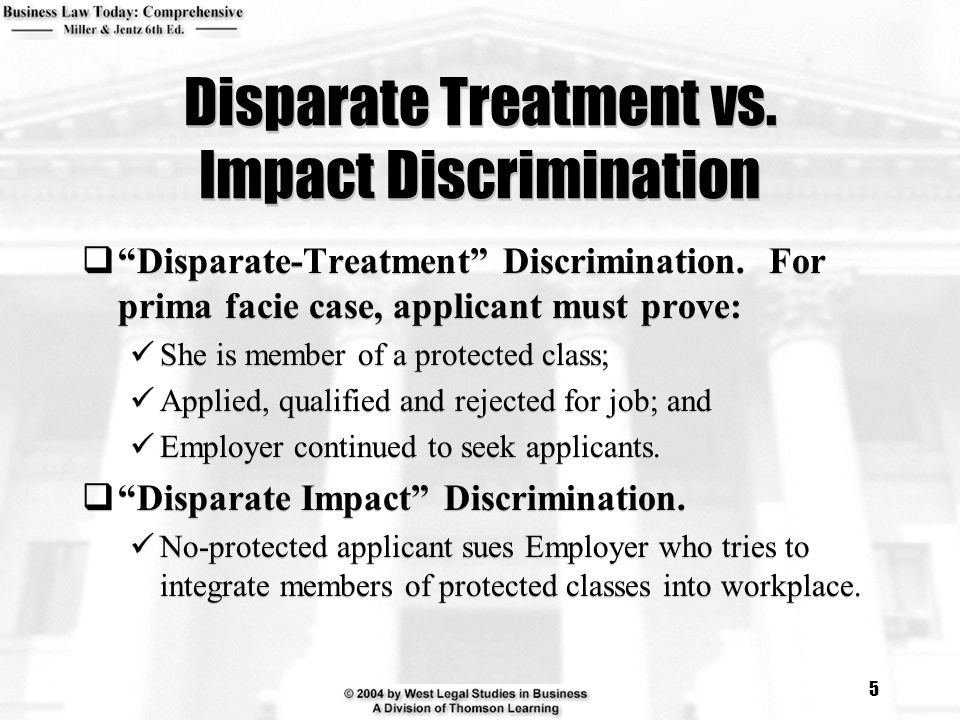






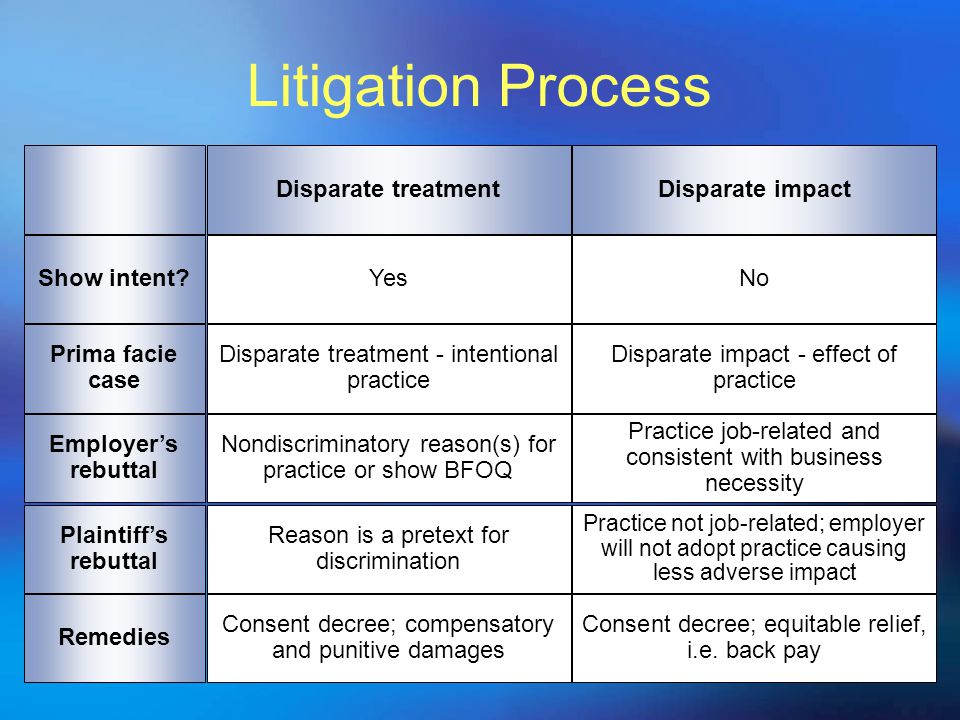






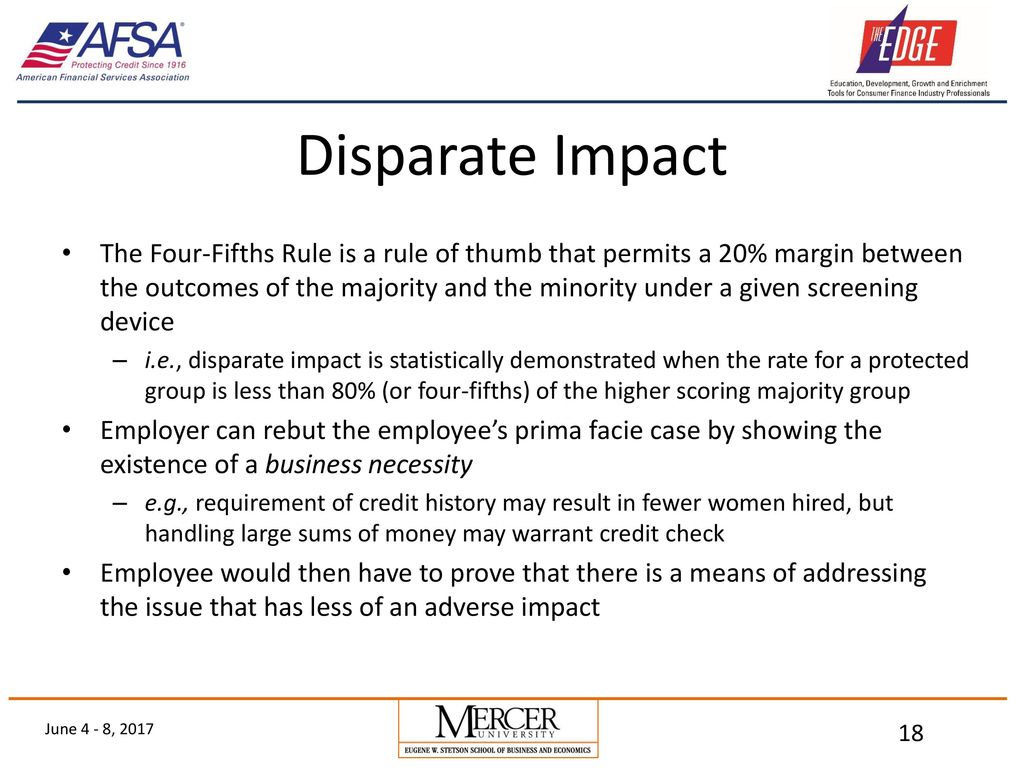





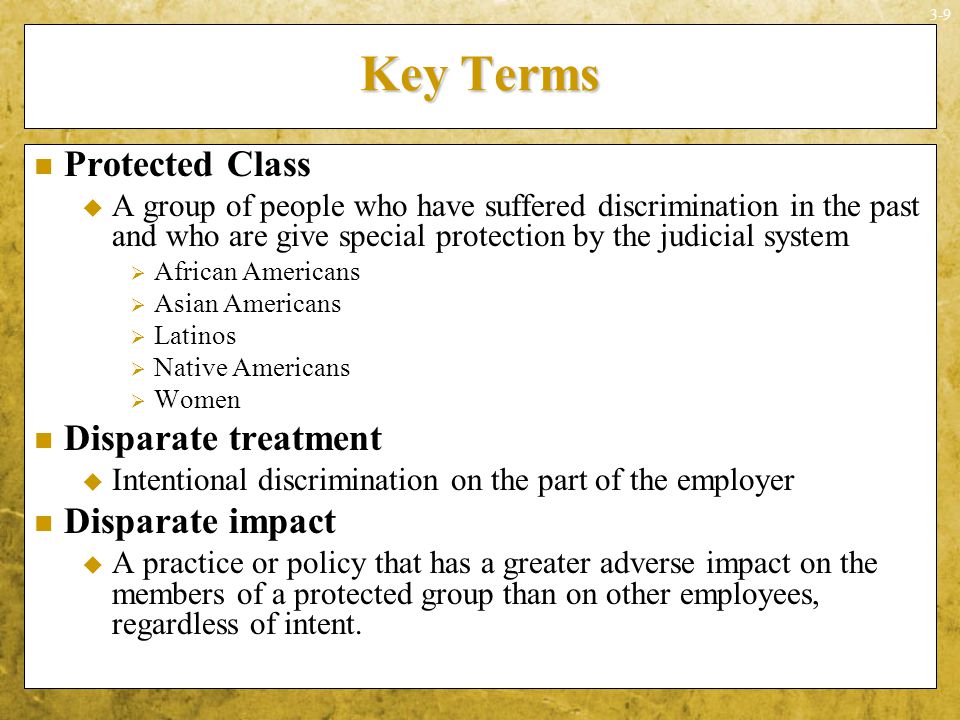
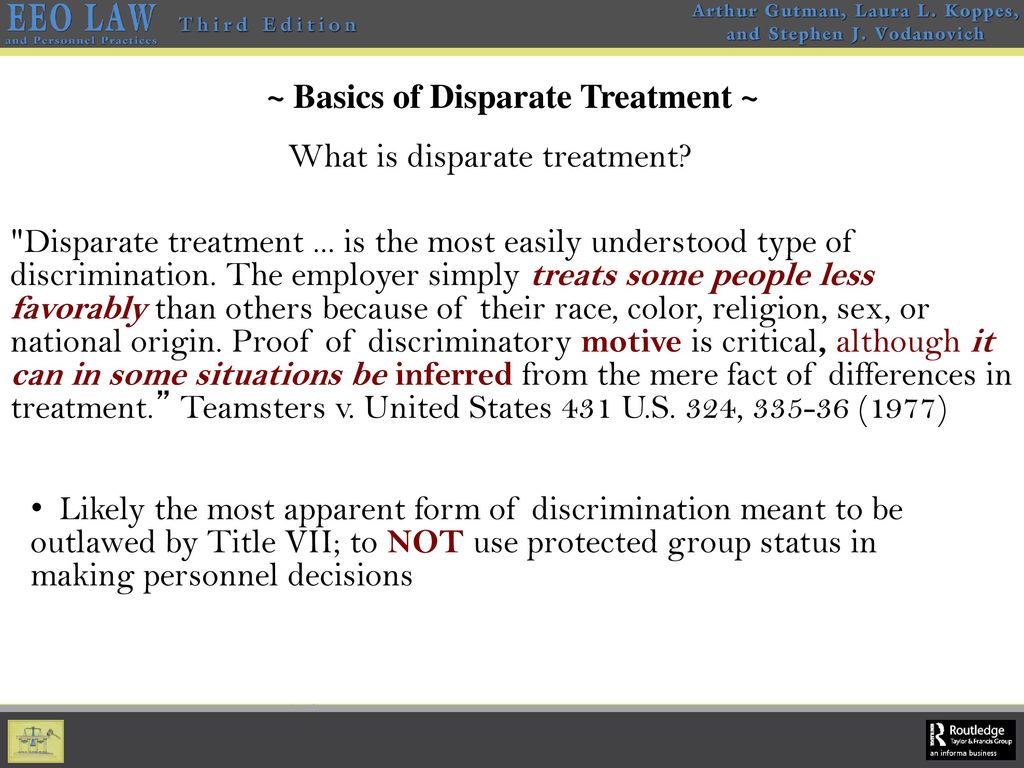



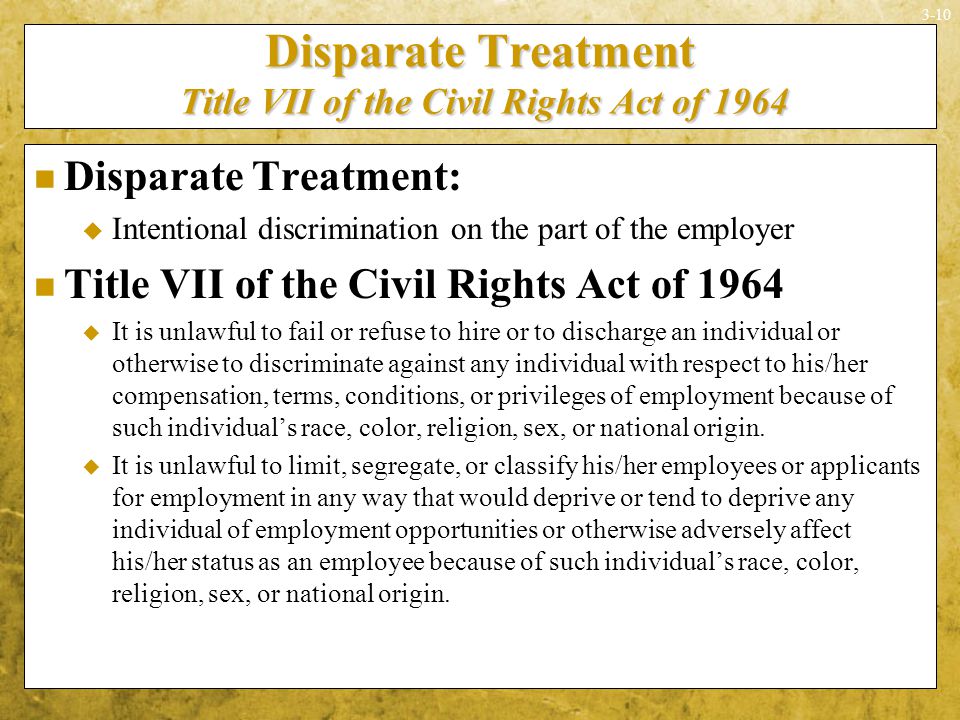


Post a Comment for "Disparate Treatment Cases Involve"